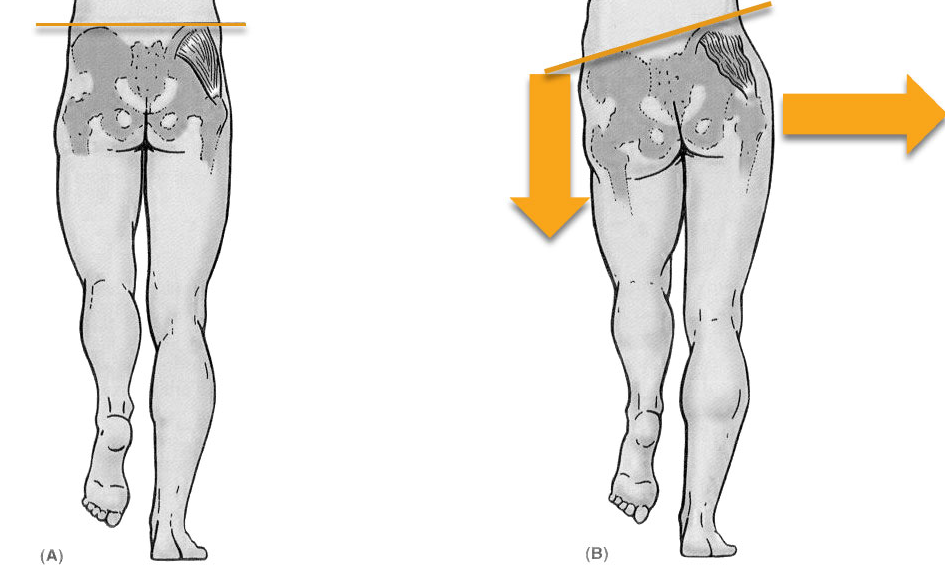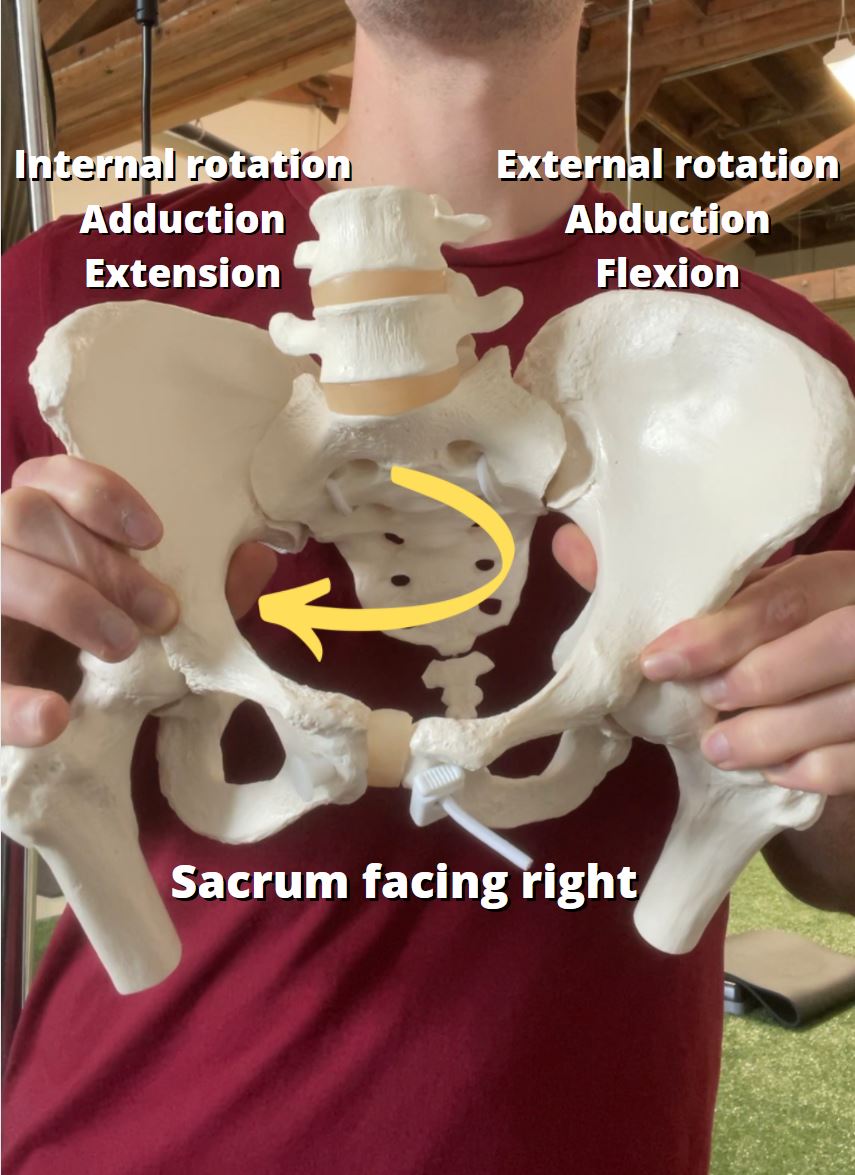Not All Back Pain Is Created Equal - Left vs Right Asymmetries (Left AIC)
Jul 14, 2022
One of the most frustrating things for me to read on the internet is how people will give only the same approach to either side of the body when it comes to any type of movement limitation or pain.
On one hand, I completely understand why this happens. Most people aren’t educated or aware of the natural asymmetries of the body, so it makes sense that when it comes to the body, back pain is probably just back pain, regardless of what side it’s on.
This is where I hope to influence your thinking otherwise. Back pain is not just back pain, and how it develops from side-to-side differs in most people.
There can be commonalities in how back pain develops on either side, but we must take into consideration the starting point - asymmetry.
This article will be focusing on the biomechanical aspects of things. We must understand that pain is biopsychosocial in nature, but beyond the scope of this article to cover.
Right Side Back Pain
Let’s start with the basics – we have a tendency to lean on the right side of our body and overall "hemisphere”. If you want more information on why, see this article here.
The natural bias of the pelvic position means that we are able to put more force into the floor on the right side, which is internal rotation:
Therefore, right sided back pain is often the result of being unable to “unload” the right side. Imagine if you were unable to shift out of your right hip when walking. The right side would start to take a beating over time, right?
This is essentially what is happening throughout our lives. This can show up in the weightroom, sports, or just regular sitting. The goal should be to educate the body to better distribute weight to both sides in a bilateral position (standing) and also to “push” out of the right side better in unilateral activities such as gait and running.
The best ways to do this are:
1. Open up the right side to teach it to “decompress” and unload that side
As we transition to late-stance phase of gait, we need to learn to transition from internal to external rotation to help facilitate a “push” from right to left, or an “unloading” from right to left.
We also need the right side of the ribcage to "decompress" to allow for us to learn how to shift properly to the left.
Here are example exercises which open up the right side to help it learn how to decompress:
Technique used with permission. Copyright © Postural Restoration Institute®2022. www.posturalrestoration.com
2. Educate the right glute max to work with the right foot
This is essential. The right glute max is arguably one of the muscle in the most disadvantageous position in the Left AIC pattern. This means it doesn’t work very well to do it’s job: Create external rotation upon transition from mid-to-late stance to help us push from right to left.
It’s important we know how to use our foot with our glute too. In gait and running, the right glute max works when the right foot arch is in contact with the ground and we are transitioning our weight onto our big toe (mid-to-late stance):

Here is an exercise that effectively trains that relationship:
This technique is a modified version of the 90/90 Resisted Right Glute Max With FA ER from the Postural Restoration Institute www.posturalrestoration.com
Left Low Back Pain
The great thing about understanding left low back pain is that it is pretty much the inverse reasoning for right low back pain – we can’t shift into our left hip.
In the Left AIC pelvis position, we struggle to find our left heel and load our bodyweight onto that side into internal rotation. This is also because the left hip is more forward than the right.
The consequence of this is that if we can’t shift over to the left to find internal rotation, we will still find a way to. Common compensations of this involve:
- A Trendelenburg sign (hip hike)

- Back extension to compensate for missing hip extension and internal rotation. This can occur during gait and/or during loaded activites like squatting when we need to push force into the ground:

So the left low back starts to take a beating because the hip/pelvis region can’t accept the load effectively.
The best way to help the left low back relax are to primarily:
1. Pull the pelvis back out of extension on that side
This technique is a modified version of the 90/90 Respiratory Left Hip Shift from the Postural Restoration Institute www.posturalrestoration.com
Using muscles that “pull the pelvis back” (posteriorly rotate) it are the hamstrings and obliques. The left hip shift in this allows for improved internal rotation on that side as well.
2. Educate the pelvis how to transition from heel strike to mid-stance
This technique is a modified version of the Standing Supported Left Posterior Outlet Inhibition from the Postural Restoration Institute www.posturalrestoration.com
This drill focuses on the left heel to create awareness of how to shift and load our bodyweight over to the left side from external to internal rotation.
Integration
The ultimate goal is to be able to integrate both right hip external rotation and left hip internal rotation positions together in more upright positions.
For many people, this can be maximized with resistance training as well so we can strengthen these weak muscles and "own" our new range of motion. Progression of these drills as well as more loaded activities is something I discuss heavily and give many specific examples of in my Biomechanics Course.
Here are some examples of integrated exercises. These are only to be done when they have mastered the other drills and have had improvements in their relevant assessments:
Technique used with permission. Copyright © Postural Restoration Institute®2022. www.posturalrestoration.com
Back pain on both sides?
This is very common – so what happens in this case of bilateral (both sides) back pain?
The most common reason for this is that the pelvis is anteriorly oriented on both sides, which means is pushed forward as an entire unit. This is what is referred to as the PEC Pattern in PRI.
The resultant outcome can be issues on both sides, but the important thing to remember is that there is still an underlying asymmetrical pattern.
The pelvis is still forward on the left, it’s just now very forward along with the right.
In order to address this, we want to take two main steps:
- Pull the pelvis back on both sides and reduce systemic extension tone – this involves getting the back extensors, lats, quads, etc to all relax a bit while educating the muscles of posterior pelvic til (hamstrings, obliques, transverse abs, etc) to pull it back:
- Address the underlying asymmetrical pattern – now we can use exercises mentioned above because there is much less overall extension tone present on both sides. In testing, these individuals will start to show more asymmetrical difference from side-to-side.
Summary
I addressed common reasons for the differences in left versus right low back pain. Obviously this isn’t every potential reason, but they are definitely some of the most common.
Hopefully it’s clear now that if we agree we are asymmetrical, we have to consider the implications of that asymmetry when we address the human body and associated biomechanical problems with it.
If you are interested in learning more, check out my Biomechanics Course, where we address so many more compensatory patterns and exactly how to address them.
Don’t miss out on free education
Join our email list to receive exclusive content on how to feel & move better.


